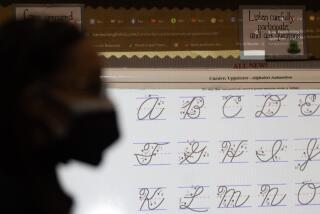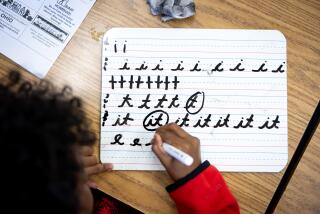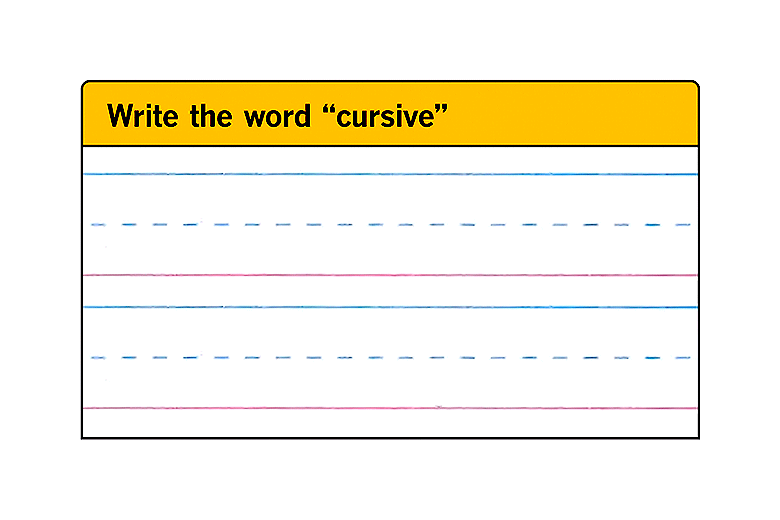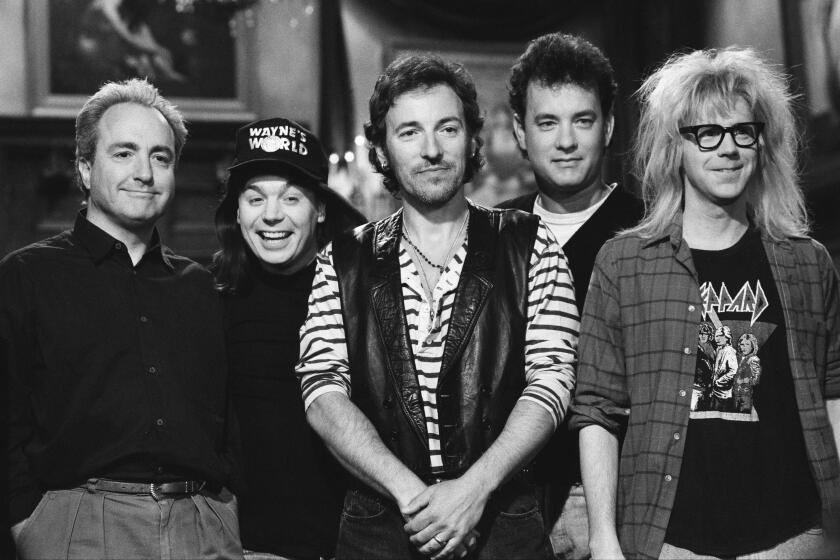The next time you want to reach out and touch someone, try using pen and paper, typewriter--or even a computer
- Share via
A reader recently complained about the difficulty of collecting material for a biography because no one writes letters anymore.
Communication is swallowed up by the telephone, which leaves no trace.
I’m sure that the disappearance of the personal letter is a valid loss to society--not only to history, but also to our own descendants, who will never know how we felt about life, the world we lived in and one another.
Even the exchange of sentiments on birthdays and other festive occasions, which used to require pen and paper and a little thought, are now accomplished for us by mass-produced cards.
Perhaps Al Hibbs is right. Reading and writing will soon be obsolete.
As always, though, there are exceptions.
One evidently is Norman B. Sigband, professor emeritus of the USC School of Business, who teaches a communication class to pharmacy students.
Writes Rachel Pearson, faculty secretary of the USC School of Pharmacy, “In his textbook ‘Communication for Management and Business,’ co-written with Dr. Art Bell, Dr. Sigband urges professionals to make full use of the letter whenever possible, even (and especially) if you’ve just set down the telephone receiver after a business call. Business associates, colleagues, competitors, recent acquaintances, long-lost college roommates; no one is too unimportant or too distant not to merit a few lines of acknowledgment. . . .”
Dan Wolf, of Supervisor Kenneth Hahn’s office, writes that he has maintained a correspondence with his college roommate since their graduation in 1972.
“To be sure, it has its lapses, and at times the telephone temptress has seduced us from our letter-writing discipline, but nevertheless we have now captured a record of our lives over a decade and a half that otherwise would have been just more words spilled out of the phone and into the air.”
Though they have clung to the written word, the method of transcribing the word has changed with the technology.
“Over the years our letters have mutated from hand-written scribbles to the X’d-out impressions of portable typewriters to the handsome produce of self-correcting Selectrics to the flawlessness of computer printouts.
“But the end product has remained the same . . . something we can read and hold and put aside and come back to. These letters at times have waxed self-conscious about ours being the last correspondence in the history of the world. Maybe it is.”
Even more remarkable than Wolf’s correspondence with his old college roommate, however, is the one with his present roommate.
“Such is my fanaticism on the subject that I also write a monthly letter to my wife, who happens to share the same address as me. In this way we are able to reflect on the month just past, and years from now we will be able to ask the question, ‘Where did the time go?’ and have a well-documented answer.
“And, ultimately, our children will be able to know that Mom and Dad found time for more important things than just talking on the telephone.”
Sounds like a wonderful idea, and it might keep many a marriage from going on the rocks.
I wonder, though, whether Wolf actually sends his letters to his wife through the mail, at a cost of 22 cents each, or just puts them in the mailbox.
Perhaps my greatest treasure is a file of letters from persons whom I have admired and respected. Some of them are dead now: Robert Nathan, Will Durant, Groucho Marx. But their letters will live as long as I do, and longer, if anyone is curious.
For example, I have a letter from Nick Williams, former editor of The Times, that illuminates a little-known facet of his character and that should be of great use to his biographer.
It was written in response to a column of mine in which I said I saw no reason why women sports reporters shouldn’t have access to men’s dressing rooms so long as men also had access to women’s dressing rooms.
Mr. Williams wrote:
“I thought your column this morning debating the wisdom of permitting feminine reporters to invade the dressing rooms of male athletes was eminently judicious. An eye for an eye.
“When I was very young and envious, two of my young friends joined me in boring a hole through three inches of plaster that separated the male dressing room from the female dressing room at the Dallas Country Club in Texas.
“It was not easy, and, taking turns at it, it took about 45 minutes of intensive drilling, using a screwdriver that we happened to have brought along, and although we’d been swimming in the country club’s pool and also had just stepped out of the showers, we were finely powdered with plaster dust and a little sweaty by the time we got the hole bored.
“Since this was my idea, my fellow peeping toms agreed that I should get the first peek. So I moved forward and applied my eye to the hole.
“And an eye was staring at me from the other end of it . . . .
“In shock all of us backed off, until one of us had the presence of mind to jam a wet towel into the hole.
“The next day it was plastered up again, so none of us ever learned what happens in a feminine dressing room.”
Now there is a piece of history that will delight posterity, and if Nick Williams were not addicted to the written word, it would probably have been told over a drink down at the Red Dog saloon and would be lost forever.
More to Read
Sign up for our Book Club newsletter
Get the latest news, events and more from the Los Angeles Times Book Club, and help us get L.A. reading and talking.
You may occasionally receive promotional content from the Los Angeles Times.








